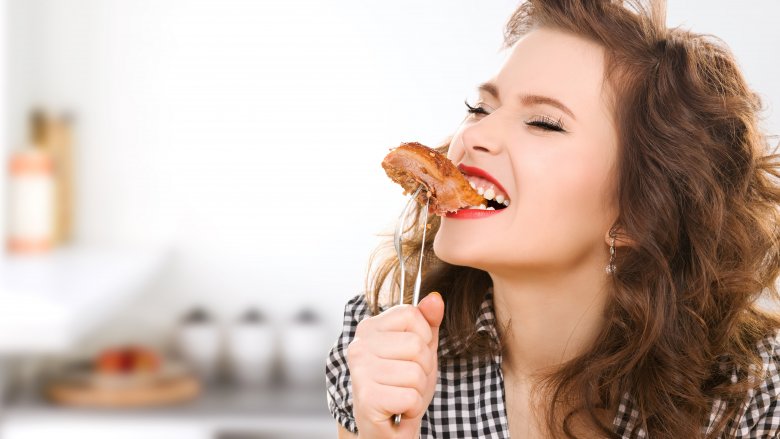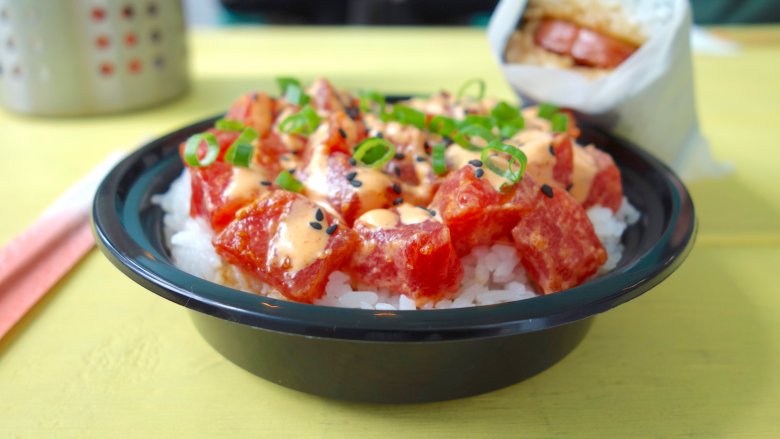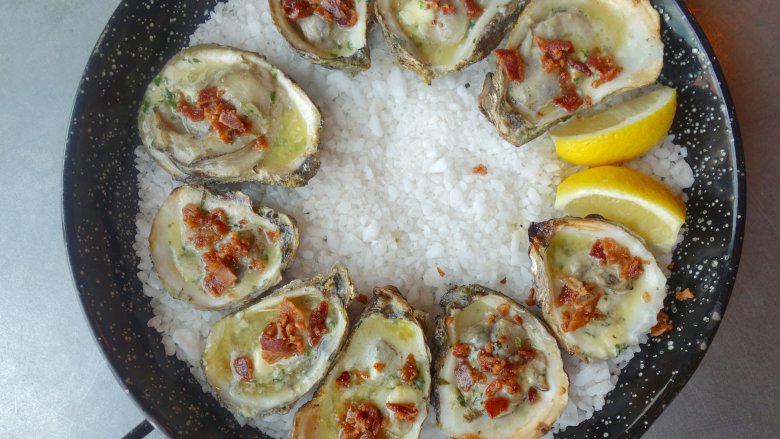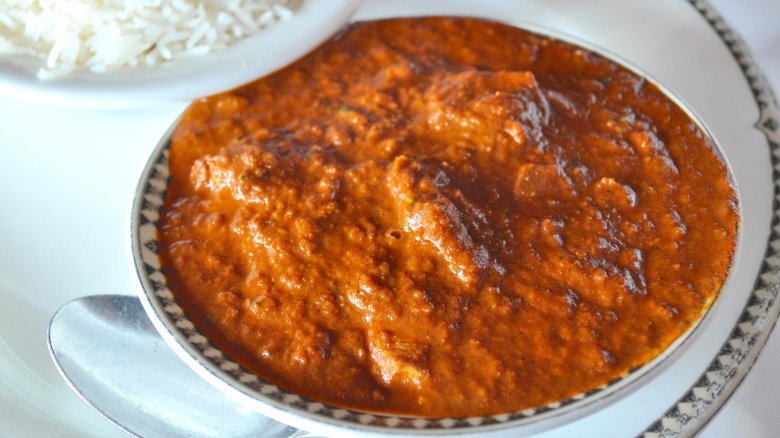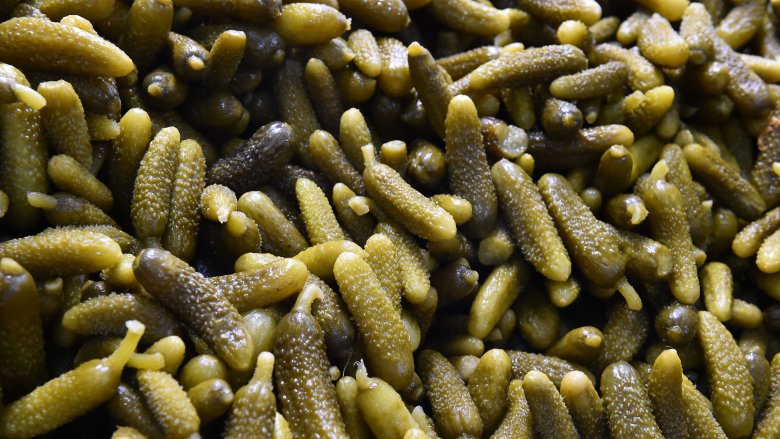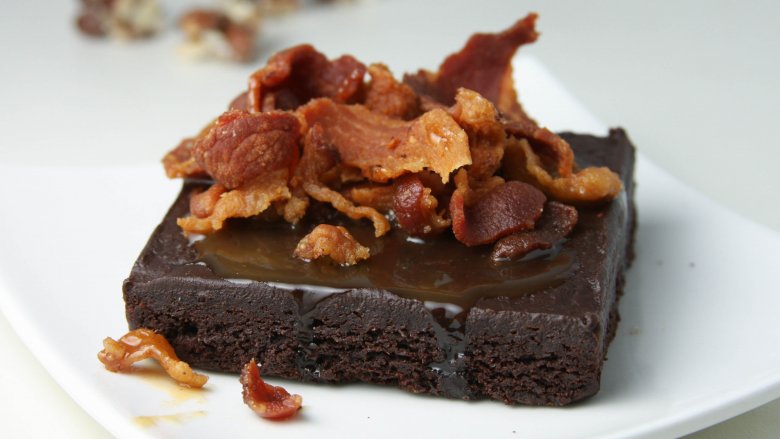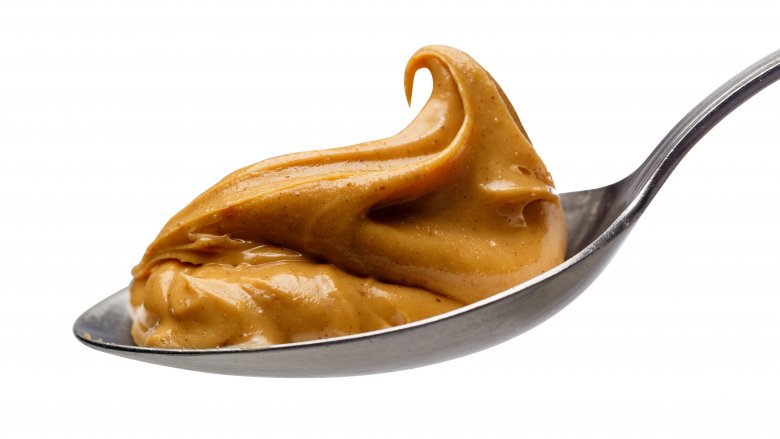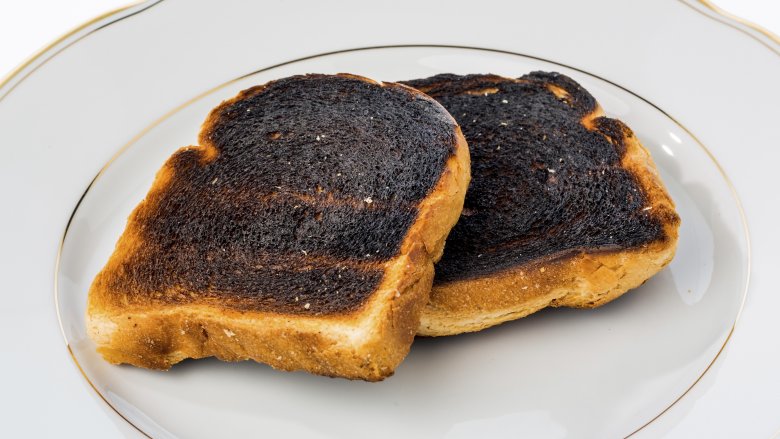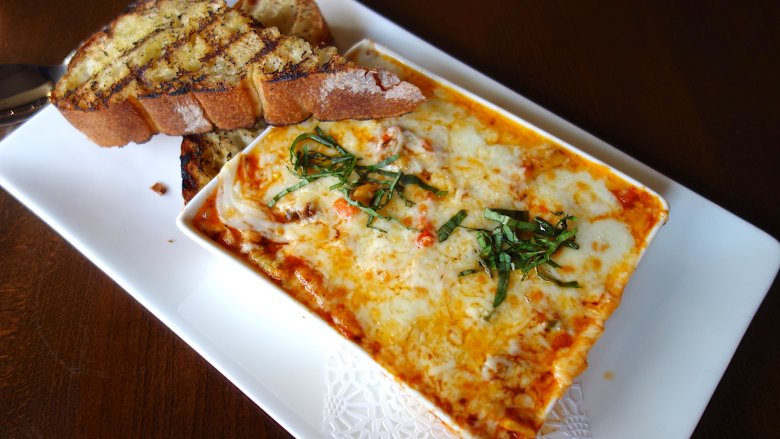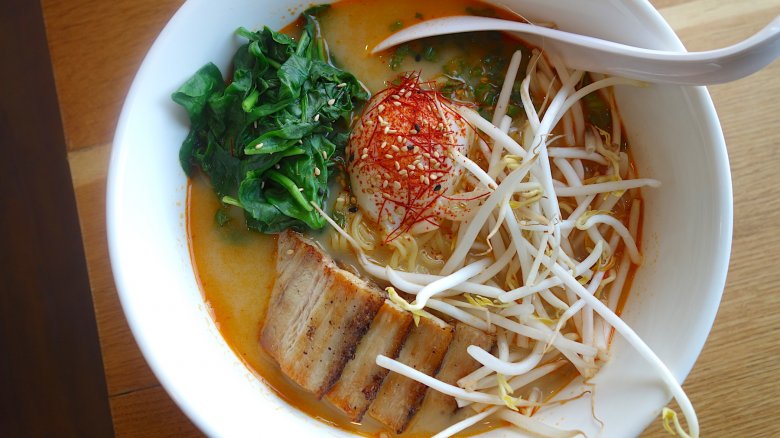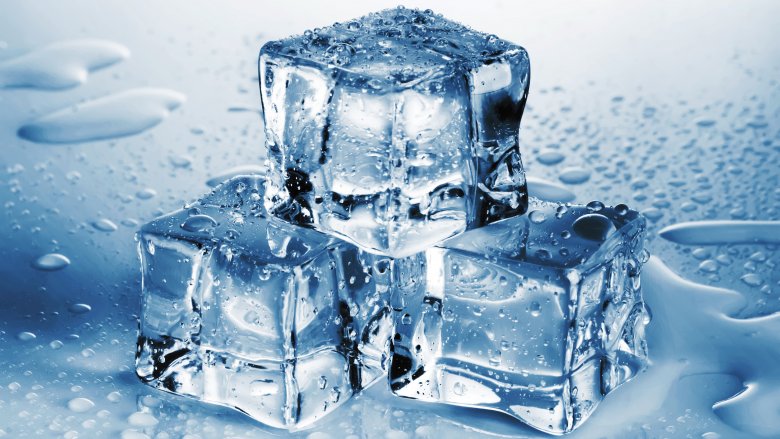Weird Food Cravings And What They Really Mean
A couple of weeks ago, I conducted a wholly unscientific but highly entertaining Facebook poll about strange food cravings. My friends' answers ranged from the charmingly nostalgic — salted peanuts in bottles of Coke, leftover pizza with a glass of milk — to the downright disturbing: cold hot dogs dipped in peach jelly. Margarine-smeared Pop-Tarts. Myriad "sandwiches" consisting solely of condiments on white bread: mayonnaise, ketchup, even tartar sauce. And one vote for a plain chicken breast washed down with a vodka soda, which sounded more like a cry for help than a guilty pleasure.
As someone whose own cravings for salad at breakfast, anchovies straight from the tin, and Alfredo sauce on just about anything (don't ask) cause considerable concern among loved ones, I got to thinking about the science behind all these alimentary urges. Much as we'd like to blame that sudden yen for, say, a big, bloody rib eye on an iron deficiency, is malnutrition really the main culprit, or are our devious minds and cheating hearts as liable for our foodie foibles as our needy bodies? In light of studies suggesting that a complex mix of biological, psychological, and sociocultural factors play a role, let's consider a few of our quirkiest cravings.
Raw fish
It's hard to believe that, just a few decades ago, mainstream America viewed sushi with suspicion, partly because of lingering post-World War II prejudice. Today, there isn't a grocery store across the land that doesn't carry the prepackaged nigiri many of us now scarf down on the regular, along with poke, ceviche, and other uncooked seafood specialties that once seemed so exotic.
In a bit of a chicken-and-egg situation, its very availability may explain its allure: Research on sushi cravings among Japanese women concludes that we're conditioned by our cultural surroundings to want what we want. It's like that old joke about "the seafood diet": the more you see food (in this case actual seafood), the more you eat it. But we may also have been won over by the soft consistency of raw fish. As this NPR report explains, because they aren't taxed by gravity, fish don't develop strong muscles, so their fresh flesh retains the "silky, smooth texture" we associate with many a comfort food. In other words, on the palate, sushi doesn't register as foreign at all, but rather as soothingly familiar, much like oatmeal, pudding, and other childhood favorites. And the good mood that perception elicits might be bolstered by the Omega-3 fatty acids found in fish such as salmon and mackerel: many of us don't get enough of them, despite their apparent effectiveness in reducing depression.
Oysters
Raw from the half-shell, smoked from the tin, or broiled and topped with bacon, breadcrumbs, Parmesan cheese, and so on, oysters have a pull unlike other types of seafood that deserves special consideration: They're aphrodisiacs.
If you've always taken the storied ability of bivalves to put you in the mood with a grain of salt (not to mention a squirt of lemon and a dash of hot sauce), think again. Back in 2005, Dr. George Fisher, a chemistry professor in Florida, discovered that oysters — as well as mussels and clams — contain two amino acids that, as he told The Telegraph, "you can't just find ... in a vitamin shop." Injecting those acids into male and female rats led to an uptick in the production of testosterone and progesterone respectively — and, sure enough, "increased levels of those hormones in the blood means you are more active sexually."
That discovery only reinforced "previous speculation about the powers of oysters [based] on the refueling powers of their high zinc content," notes the article. "Zinc is found in sperm." Where it's not always found in sufficient quantities, according to Prevention, is "in older people and anyone under a lot of stress." If that's you, you may notice that you're craving salty foods (such as oysters) — not an uncommon side effect as low zinc tends to lessen your sense of taste. What have you got to lose by indulging your passion for Pemaquids and Kumamotos (and perhaps giving into other passions afterward)?
Chilis
From salsa to Sriracha and curry to kimchi, an addiction to spicy foods can seem perverse from the outside looking in: Isn't deriving pleasure from pain the very definition of masochism?
The answer is yes — and no. To be sure, the compulsion to chomp on chili peppers until your face melts, your tongue goes up in flames, and your stomach lining's ripped to shreds doesn't square with any reasonable definition of self-care. But as this Northwestern University publication explains, the sensations caused by the offending plant compounds called capsaicinoids don't end there. Rather, upon receiving the pain signals transmitted by these irritants, our brains work to counter them by releasing mood-boosting endorphins and dopamine — meaning that hotheads are deriving pleasure from, well, pleasure as much as pain. And as with anything that brings you pleasure, it's likely that you'll eventually crave more and more. Hey, you can't have a rainbow without a little rain.
You can't have a rainbow without a little sun, either. In UV-drenched equatorial climates where they're more prevalent, spicy foods have real health benefits: the sweat they cause cools the body, while their antimicrobial properties help prevent illnesses. Not so masochistic after all!
Pickles
Though a preoccupation with pickles gets pinned primarily on pregnant women, it's been shared by billions of people the world round for millennia. My aforementioned Facebook thread yielded loads of anecdotal evidence on that score: From pickled beets, okra, cabbage, and herring to good old kosher dills paired with peanut butter, cottage cheese, and even barbecue-flavored potato chips, the myriad responses served as a reminder that — be it Indian achar, Japanese tsukemono, or Italian giardiniera — we're all in this pickle together.
Of course, salt's the key piece of the pickle puzzle: Sodium is an essential nutrient, so we're hard-wired to crave it (as this study on blood-pressure disorders reveals). In fact, according to Prevention, sodium's consumption "triggers the release of dopamine, the neurotransmitter associated with the brain's pleasure center, making salty foods as addictive as nicotine and alcohol." Why we hanker for vinegar is less clear — though given its potential virtues as a digestive, weight-loss, and even antineurotic aid, we might wonder whether our bodies are trying to tell us something. (Even if that something is just how refreshing sourness is in contrast to all the salt and sugar we ingest.)
Salty-sweet snacks
Speaking of salt and sugar: It's practically an American pastime to dip fries into milkshakes, scoop soft-serve up with potato chips, crumble bacon onto chocolate, and toss popcorn with M&Ms or gumdrops (which one Facebook friend swore "tastes like Froot Loops"). As previously noted, we require some sodium for survival, and sugar is a critical source of energy, be it the lactose in our mothers' milk or the fructose, glucose, and sucrose found in fruits and vegetables. But why do we go gaga for them together?
The answer is actually quite simple: If one is good, two is better. As this iO9 article explains, our taste buds can tire of single flavors quickly, but "more complicated, blended flavors" keep them engaged. With respect to salt and sugar cravings specifically, author Barb Stuckey is quoted as saying, "The combination of these two positive biological responses is VERY pleasurable. To use an analogy, it's akin to hearing beautiful music while sniffing rose petals: two positive sensory stimuli." Just don't try dipping fries into milkshakes while listening to beautiful music in a roomful of roses — you could overdose on bliss.
Peanut butter
Peanut butter is salty and sweet at the same time — of course we're nuts about it (no pun intended). It's also high in fat, crucial to the human diet for a whole host of reasons provided by the Harvard Medical School. Those qualities alone go a long way toward explaining why so many of us can consume so much of the stuff in one sitting — or standing, at the kitchen counter, with nothing but a spoon in one hand and the jar in the other. (Guilty as charged.)
But there's another reason it goes down so easy: its texture. Quoting nutritionist Dawn Jackson Blatner, The Huffington Post claims that "peanut butter's low chewing demand and low-water content are both factors that make it easy to gobble a lot at once." Because "things that are creamy without much chewing needed aren't as filling as foods that have more chewing involved," in Blatner's words, we can polish off half a container before satiety sets in. The logical response to that is "sorry not sorry."
Burnt food
The lure of multilayered flavors as we've described may also underpin our widespread affinity for blackened popcorn, barbecue bark, brownie edges, and other crispy, crunchy, charred tidbits. (Heck, the crust on the bottom of a rice pan is treated as a delicacy in places as far-flung as Korea, Iran, and Costa Rica.)
Epicurious describes their appeal as a function of the Maillard reaction caused by dry-heat cooking methods (grilling, baking, roasting), which produces molecules that give food not only its color but a savory, umami, and sometimes even bitter flavor. And of course, the more burnt it gets, the stronger those flavors are — and those are the flavors that some people crave. Which is precisely what you can tell your family when they arrive for Thanksgiving dinner only to find you've turned the turkey to a heap of ashes. What you probably can't do is blame your espresso addiction on it — though coffee's aroma and flavor indeed result from the Maillard reaction during bean-roasting, it seems pretty safe to chalk that craving up to caffeine dependency.
The white stuff
Craving potatoes, bread, and pasta isn't weird in and of itself — but the impulse to cram them down our gullets to (or past) the point of discomfort isn't exactly normal or healthy. Shocker, right? CNN's Lisa Drayer traces the slippery slope from a bite to a binge from the top down. Carbohydrates, she writes, "are key to regulating blood sugar and providing energy throughout our bodies," meaning it's not the taste of these (delicious) foods that makes us keep eating them. In actuality, it's our bodies trying to restore our blood sugar. The problem is that we tend to satisfy said urge not with a hearty bowl of whole grains but with simple carbs, which, according to Shape — digest faster, kick in sooner, and also dissipate sooner. (While potatoes are technically complex carbs, their high starch has a similar effect.) These "rapid rises and drops in blood sugar" set off a delicious yet vicious cycle, says Drayer, in which "the more processed, refined carbs we eat, the more we crave."
It doesn't help that we tend to slather our carbs with calorie-dense fats and/or more carbs. When you mix that macaroni with cheese, pour gravy on those mashed spuds, or smear that slice of toast with Nutella, you're layering crave-worthy substance on crave-worthy substance. Then again, every once in a while, it doesn't hurt either — at least not during those first few joyous mouthfuls.
Pho and ramen
Americans have spent the past several years diving head-first into Asian noodle soups, particularly Vietnamese pho and Japanese ramen. At this point, it should be easy to guess why. The carbs in the noodles, the sodium in the broth, the softness of the cooked textures: they all add up to a bowlful of cravings — cravings that, as it turns out, have anthropological roots, as one BBC article attests in reference to research by food historian Ken Albala, who argues that soup is a cure-all for the ages. Such "convalescent food," as he calls it, is a bit like baby food in that it's full of nutrients, but easy to digest. Of course, soup's ability to whisk you right back to childhood isn't based on the recipe alone but also on its likely source: family. The same article quotes food psychologist Christy Fergusson, who explains, "When we want to feel comforted we look to what our mothers would have provided."
Granted, pho and ramen aren't exactly bland, but they do contain subtle flavors that some like to spice up. What's more, they weren't well-known stateside until recently. So why would we choose them over, say, split-pea or Jewish-style chicken-noodle? The answer might lie in a contradiction: While seeming familiar, they remain novel — and novelty, as it turns out, generates its own dopamine rush.
Ice
An obsession with ice could mean one of two things: that you're a cocktail connoisseur, forever seeking the latest in cube-shaping technology and clarity, or — if you're prone to chewing it — that you should seek professional help.
No, it doesn't mean you're crazy. But it may mean that you have pagophagia, a form of pica, as the eating disorder that drives an attraction to non-food items, such as dirt and paper, is called. The compulsion to eat ice specifically can be an indication that you have anemia; as The New York Times notes, some scientists theorize that iron deficiencies can cause inflammation in the mouth, which would certainly be soothed by chewing ice. Treatment with iron supplements or other medication usually solves the problem. If not, then your pagophagia could, according to the Mayo Clinic, be related to a mental-health issue such as obsessive-compulsive disorder, treatable by therapy. It can also be a symptom of pregnancy, in which case you should probably give your obstetrician a heads up.
